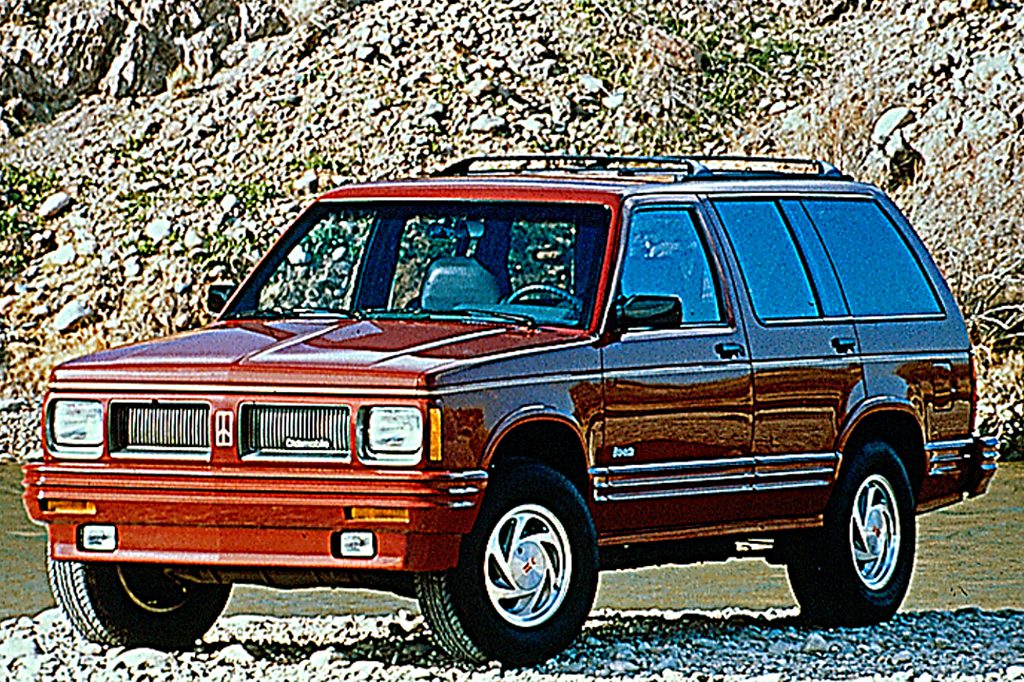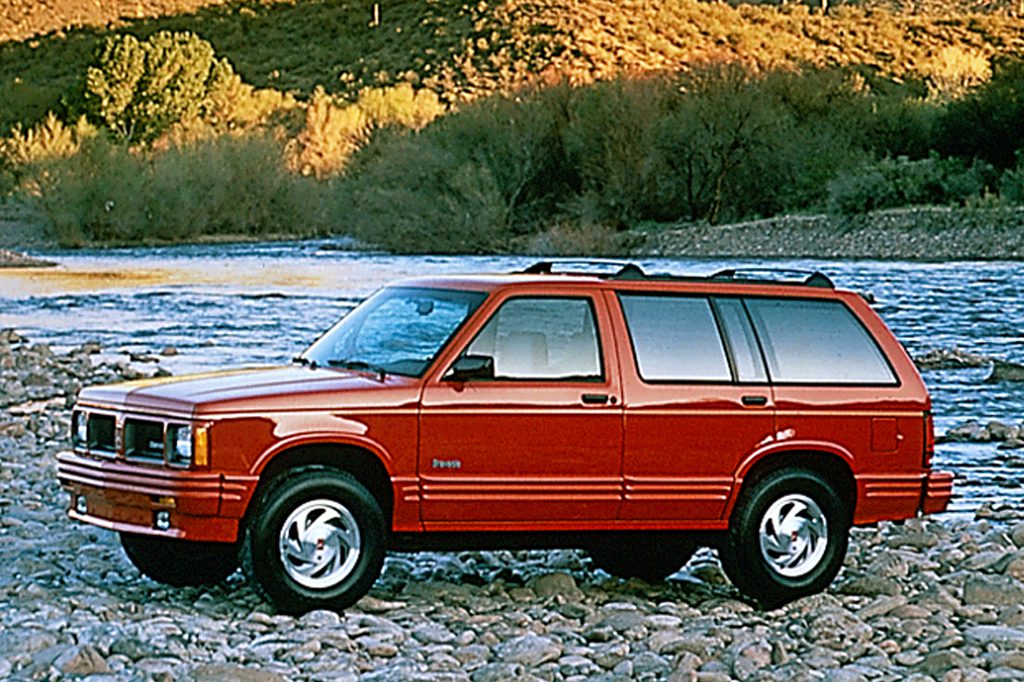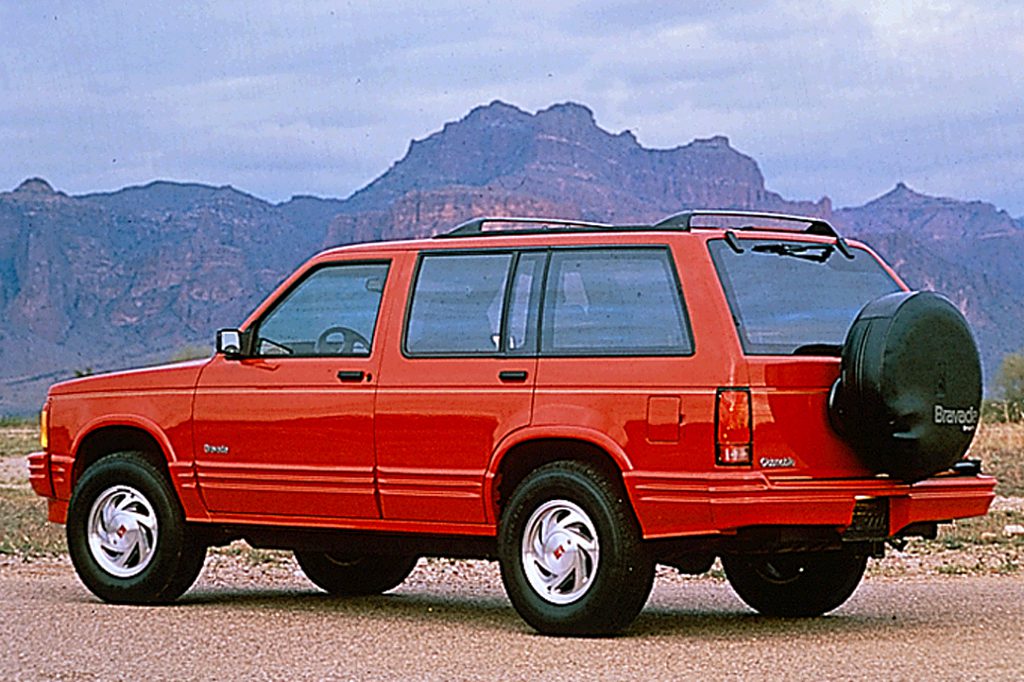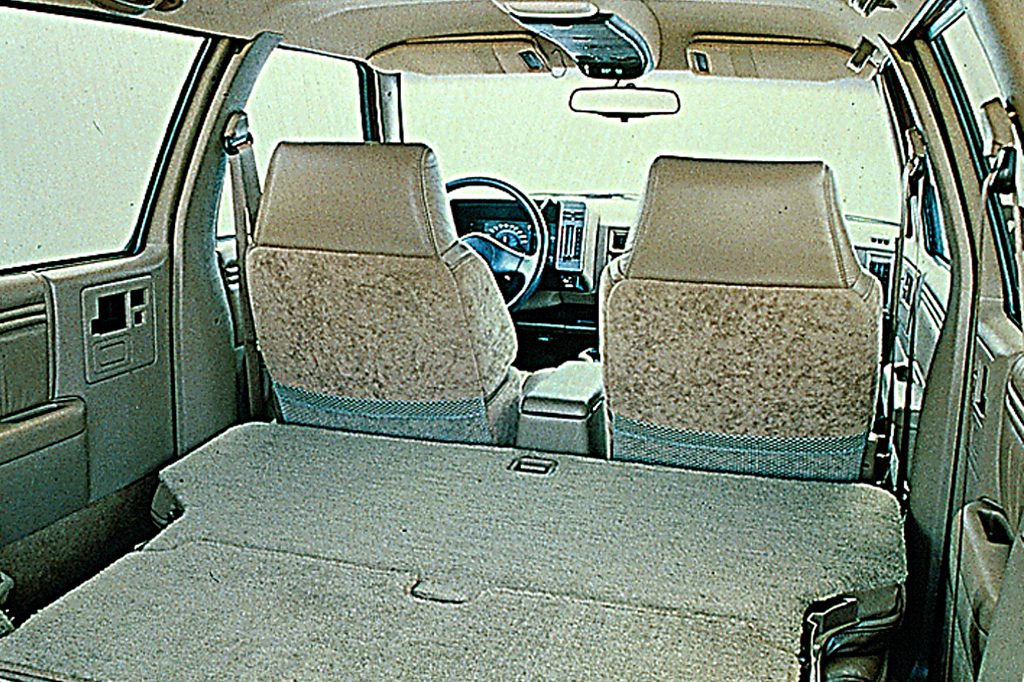| Midsize SUV; Built in USA |
|
|
| Good condition price range: $1,200 – $1,900* |

1991 Oldsmobile Bravada

1994 Oldsmobile Bravada

1994 Oldsmobile Bravada

1992 Oldsmobile Bravada dashboard

1993 Oldsmobile Bravada cargo area
| Pros: |
|
| Cons: |
|
This version of the Bravada also fails to provide a driver-side airbag, standard on some competing models. However, the Bravada is a competent and comfortable luxury 4×4 that deserves serious consideration.
Overview
Olds joined the sport-utility market in 1991, launching a new 4-door entry called Bravada. Essentially a Chevrolet S10-Blazer wearing a tuxedo, Bravada came equipped with GM’s full-time 4WD system, known as “Smart Trak.” However, the Bravada was not being touted as an off-road vehicle, so no off-road suspension package was offered. Under the hood sat a 160-horsepower 4.3-liter V6, paired with a 4-speed overdrive automatic transmission. Four-wheel antilock brakes were standard, as were leather upholstery and a host of power accessories.
Yearly Updates
| 1992 Bravada Added for 1992 is a new High Performance 4.3-liter V6 that delivers 200 horsepower. Also, the standard “hockey stick” speedometer carried over from the Chevy Blazer is replaced with a more subtle unit with a regular needle and a 180-degree sweep. |
| 1993 Bravada The standard 4-speed automatic transmission gains electronic shift controls. There’s also a new Gold Package option that provides gold-and-black alloy wheels and gold-tinted nameplates for the Bravada. Inside, a new overhead console includes outside-temperature and compass readouts. |
| 1994 Bravada A new Special Edition Bravada includes gold exterior trim and all-season tires. Other changes to the Bravada include the addition of new guard beams inside all four doors and a new center high-mount stoplight. |
